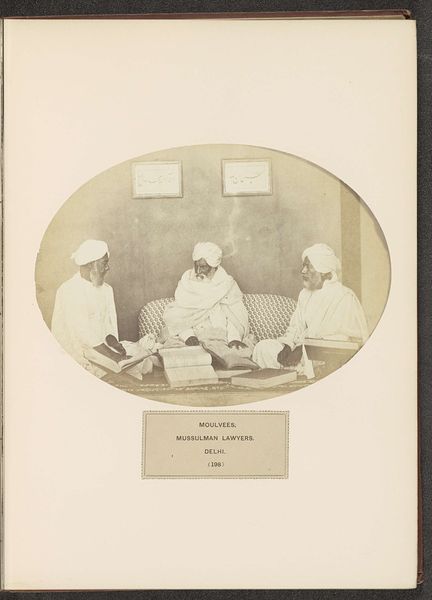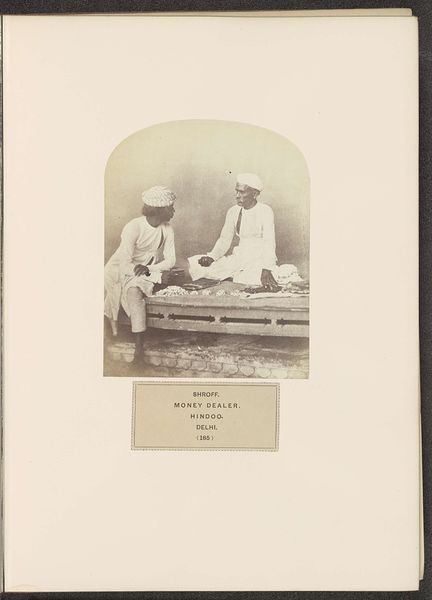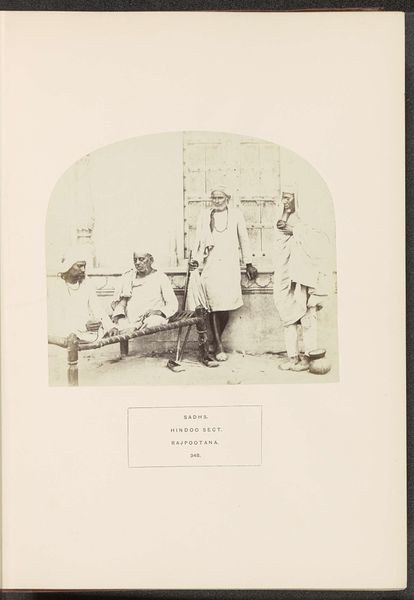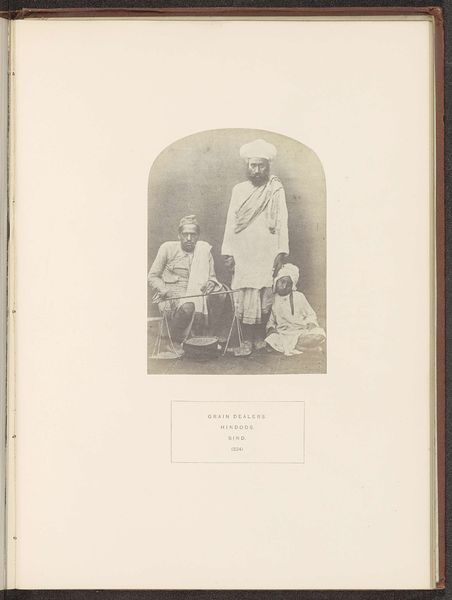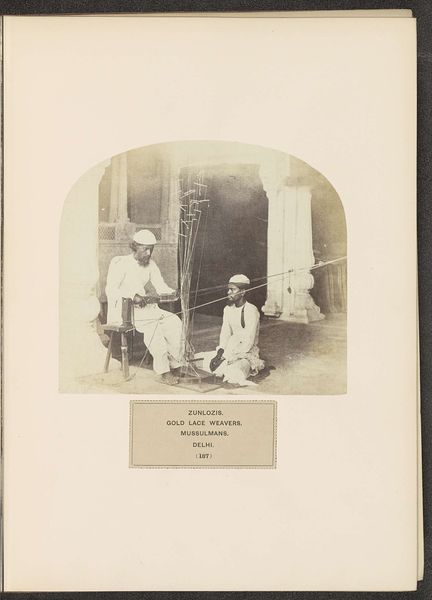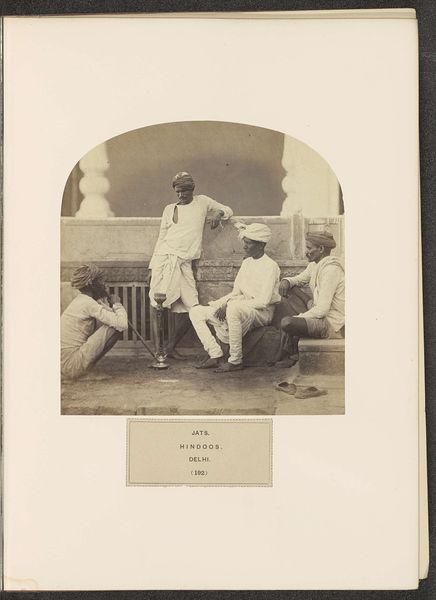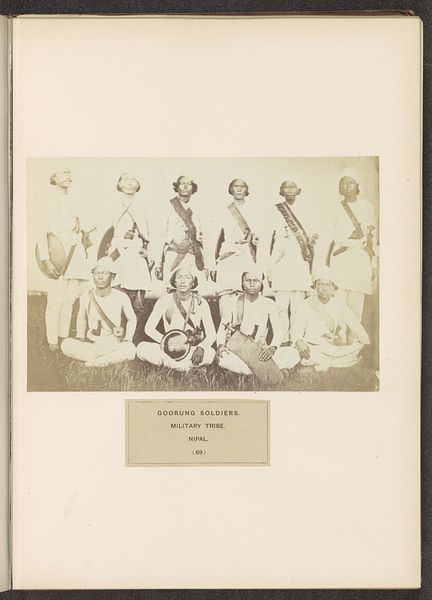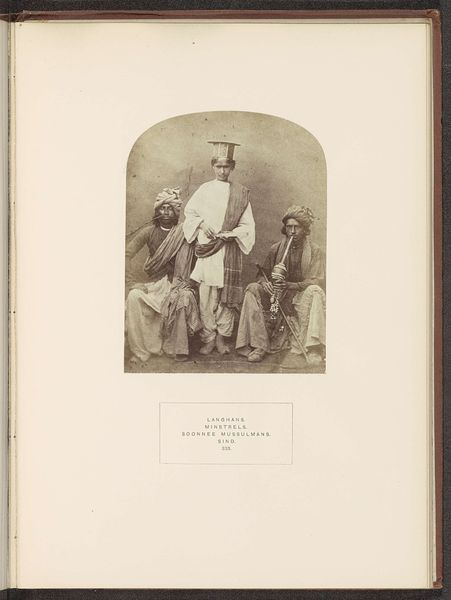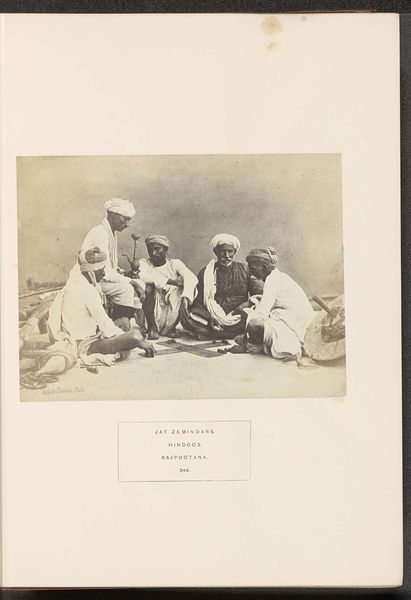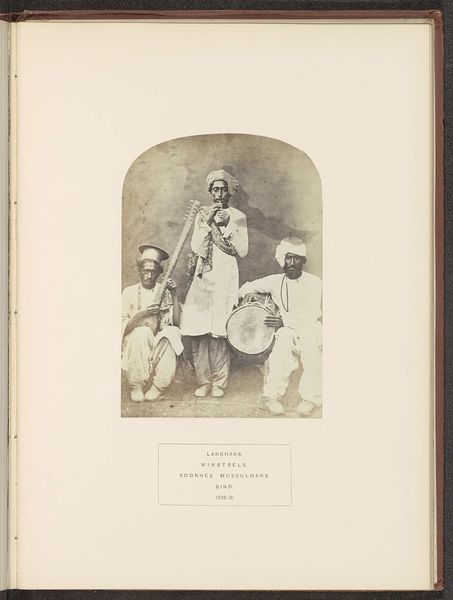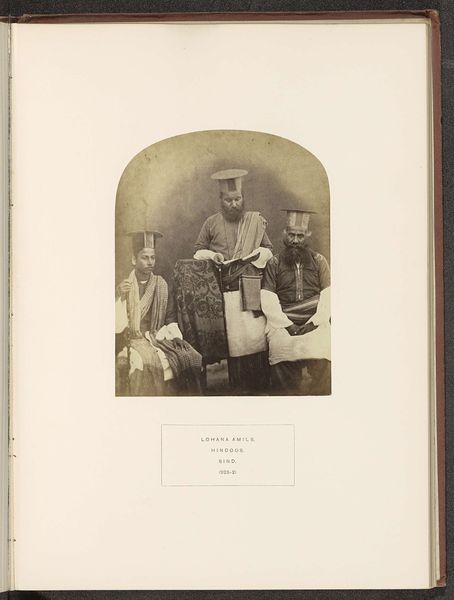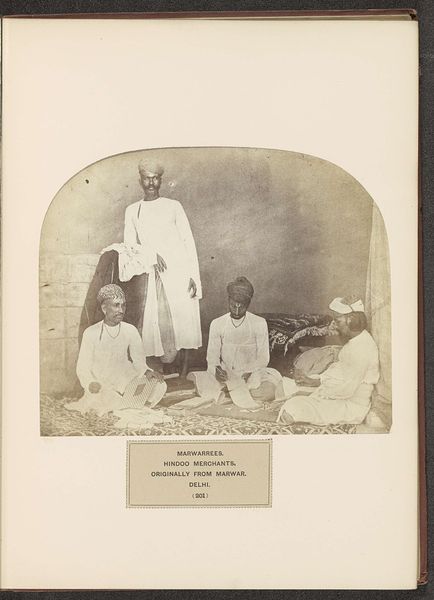
photography, albumen-print
#
portrait
#
asian-art
#
photography
#
group-portraits
#
albumen-print
#
realism
Dimensions: height 138 mm, width 195 mm
Copyright: Rijks Museum: Open Domain
Curator: This is a fascinating albumen print titled "Vier brahmanen uit Delhi zittend op de grond," created by Shepherd & Robertson sometime before 1869. What strikes you about it? Editor: Well, it's striking how posed they seem. The texture of the print is beautiful, it has such a warm, aged quality. Given its age, it makes me wonder about the whole process of creating an image like this back then. How should we interpret this work, considering it’s a historical document? Curator: The materiality is key, right? Albumen printing involved coating paper with egg white and silver nitrate. Think about that - the labor of preparing the print, the accessibility of materials... Before widespread photographic reproduction, this print would have been a commodity, a kind of luxury item itself, documenting these men. Does the social status of the photographed and the economic implications of photograph printing during that era give you pause? Editor: Absolutely! I didn’t think about the albumen itself as a material with a history and cost. The choice to depict these specific Brahmins in this way also now feels more loaded. It definitely hints at the social power dynamics at play during that period. What were Shepherd and Robertson hoping to achieve with this portrait? Curator: I suspect the studio aimed for documentation for a Western audience, exoticizing these Brahmin figures. The “realism” of photography made it a powerful tool, influencing Western perceptions of other cultures. The print then became a tool for reinforcing existing social hierarchies. Who had access to these images, and for what purpose? Editor: So it's not just a simple portrait but reveals a whole system of production, consumption, and representation, all tied to colonial power. It is about labor, materials and cultural consumption. Curator: Precisely. Seeing the image this way reframes it beyond its face value, exposing how art is always embedded in material and social realities. I wonder how our understanding of materiality continues to shift our view on photographs. Editor: I agree. I'll definitely look at historical photos with a more critical eye toward their materiality and how it speaks to their social context.
Comments
No comments
Be the first to comment and join the conversation on the ultimate creative platform.
